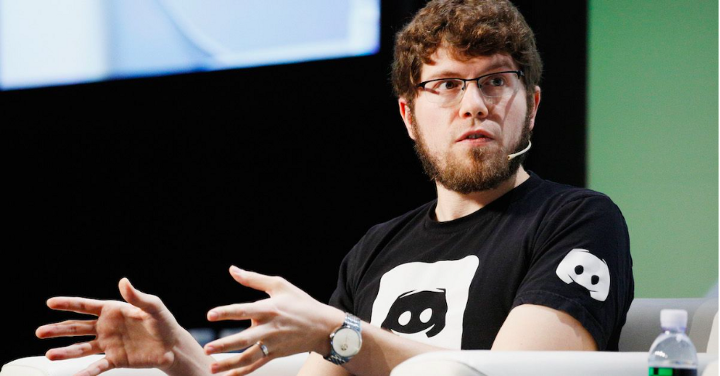Meet a Programmer Who Rejected a $10,000,000,000 Acquisition Offer From Microsoft
A Journey of Failures to Inspire Young Developers.

Jason citron had built several products in his life.
Most of those products were flops.
But one of those products brought a $10 billion acquisition offer from Microsoft.
He was so confident in his product that he ended up rejecting the offer.
Let’s find out how he built a product that is currently valued at $15 billion.
Jason learned to program early in his life 🔗
Jason’s father taught him programming and IT skills early in his life.
His father wanted to put his son in a position so that he could earn money whenever he needed it.
In high school, Jason learned to create video games and web pages.
Early in his life, Jason realized that he could make a lot of money using his IT and programming skills.
He leveraged his IT skills and taught people how to use a computer.
Using this, he made some money.
Jason’s parents misjudged his programming skills 🔗
Jason used to hang out in various online programming communities.
He tried to find people who were looking for programmers who could create websites. Those people used to hire him and he would create websites for them.
For the first time, when he asked his parents a question:
“How could you accept money from a stranger on the Internet?”
His parents thought Jason is selling illegal substances to strangers on the Internet. But as soon as he told them he was using his programming skills to make money.
They trusted him and helped him set up a Paypal account.
Higher education in Florida to learn video game design 🔗
Jason never went to a prestigious university to learn something fancy.
He studied video game design at a for-profit school based in Florida.
Jason Citron
Higher Education is an interesting part of society…When I work with people, the school they went to never comes up…only thing that matters is what can you do…At the end of the day, the beauty of silicon valley is that if you have a great idea and you can bring it to the life, you can convince a total stranger to give you money and join your project…This notion that you have to go to a great school didn’t end up being a thing for me.Steve Jobs’s keynote changed Jason’s world 🔗
Jason joined a startup incubator after graduation.
At first, Jason built a video-based dating site.
It turned out to be a horrible idea.
They shut it down the day it was released because not even a single person wanted to use it.
Next, he created a multiplayer game.
He released the game using the Bebo social network. It did pretty well, about 10,000 people were playing with each other.
He shut this game down immediately when Steve Jobs announced the Apple app store.
Launching the app store was like launching a new game console 🔗
Steve Jobs’ 2008 keynote speech changed everything for Jason.
Jason Citron
Whenever a new video game console is launched, that’s the opportunity for a new video game studio to get started, it’s because there aren’t too many games available…When a new PlayStation comes out, since it’s a new system, there’s only a handful of titles available… If you can be a launch title you can get a lot of distribution.Everything changed for Jason after seeing the Apple app store 🔗
Apple’s app store was a new opportunity to launch a new video game business.
He closed his old game.
After 5 months of tireless work, they released a game on the app store.
The name of the game was Aurora Feint.
Jason thought that if they got even a thousand players in a week, that would be amazing. The most surprising thing was that they got a thousand players in the first hour of launch.
As time passed, the game could not get the traction that Aurora Feint’s team expected. They fail to make money, which would allow them to keep the game running.
They were only able to earn money to cover one month of expenses.
Sell technology instead of video games 🔗
Jason saw that they had created all these things, like the in-game leader board, chat rooms, and multiplayer capabilities, and he thought that other developers might want to use all of these technologies in their games.
They decided to sell the technology they created for the previous game to other game makers.
They called it OpenFeint.
Supporting other game devs 🔗
The only problem was that they had no money in the bank to be able to build all the things they needed to make the technology easy to use for others.
Both Jason and his partner Daniel created a web page that said something like:
Jason Citron
If you’re making a video game and want to have a drop in multiplayer support, you can use our system.When they created their website, the tech crunch covered it up and they got a couple of hundred people on their mailing list.
With the help of that mailing list, they raised their seed round of funding.
When they launched with 15 games, everything took off from there.
Developers started having the Open Feint logo on the side of their app and almost all iPhone game creators started using it.
It got to a point where every game on the app store started having the Open Feint logo on the side.
Jason Citron
It was pretty wild… It was really like a whole social platform for people to play with their friends.What was the business model like? 🔗
The OpenFeint team initially thought the software would be free for any game. As the game become popular, they would ask the game team to pay them money.
Later they realized that it was not the right business model.
Eventually, they made it completely free.
They fail to figure out how to make money with Open Feint.
To run the company, Jason Citron used to raise money.
Acquired for $104 million 🔗
The number of users using Open Feint and their employees working on it grew exponentially.
In April 2011, the OpenFeint company was sold to the Japanese game company GREE for $104 million.
Initially, the GREE company agreed with Jason and his team to support them with resources and everything they need to make a great company.
But three or four months after the acquisition, Jason realized that they had a different vision for this product.
He left the company.
Jason’s Unique Vision for iPad 🔗
In 2012, Jason used to think a lot about distribution, which will help startups stand out.
At the time, the iPad user base and market were increasing exponentially.
Jason had a unique insight that the iPad may end up replacing mobile devices.
People who played games on the iPad had a different type of behavior compared to people who played games on mobile devices.
In the case of an iPad, people tended to sit longer and had a deeper level of experience.
Jason Citron
The idea I had was what if we built a gaming business that was more like traditional video games but played on tablets as opposed to some kind of mobile game that I’ve been doing before.Unique realization after studying the video game business 🔗
After studying the gaming industry, Jason realized that companies which have been around for a long time tend to have some kind of enduring advantage beyond a single title.
A decade ago, video game companies that had been around for a long time tended to have a distribution mechanism of their own. They could easily use this distribution mechanism to buffer the time between creating successful titles.
Examples of these are Sony with its Play Station, Microsoft with its Xbox, and Valve with its Steam Store.
That’s why he thought of building some kind of distribution mechanism.
For that, he had an idea to create a group communication app for people who used to play games.
His whole idea was to build a team-based multiplayer game that had built-in text and voice chat.
Eventually, his plan was to build a communication network and use it to release additional games and ultimately build a game distribution business.
Reimagining the League of Legends game 🔗
Jason and his team took one of the League of Legends game modes and started reimagining it for a 12-inch piece of glass.
They were designing the same game to be played on a tablet.
League of Legends game was only available in PC mode.
That’s why they tried to rebuild it.
They redesigned the entire game and added many native mobile experiences to their game to offer something different.
They called the company hammer and chisel.
To build the game they hired a total of 18 people.
They raised money to build that game. It took them around two and a half years to build that game.
Did the game become a hit? 🔗
The game was released in July 2014. It didn’t get the traction the team hoped for.
At first, all the critics liked the game and gave amazing reviews.
Many people installed it initially.
Still, the game flopped.
As time passed, it became clear to the team that gaming on the iPad wasn’t going to grow much, and that mobile would still be the winner.
Stan Vishnevskiy presented a new idea to Jason 🔗
Stan Vishnevskiy was an engineer at the hammer and chisel company.
He met Jason and told him about his idea to build a communication app that doesn’t require bootstrapping it with a game.
This idea shed the seed of the idea of what discord is today.
Jason Citron
The insight that he really had was to put a couple of dots together… we’re seeing our customers communicating around our own game with all these different apps and also ourselves when we’re playing on PC… We should solve that problem directly rather than needing to build a new game…we should start making it on PC.This is how Discord started.
Hanging out with friends online was the next big idea 🔗
For Jason, growing up, video games were the way he passed the time and hung out with his friends.
He was not a child who went out and played outside.
Throughout his entire life, Jason had so many amazing memories with his best friend, his wife, and his brother playing video games.
The video games themselves were not the point.
Half the time they’ll be talking about random things like life in general, and fundamentally discord was about creating a place where you and your group get together to talk and hang out.
It was like having your own private cafe, bedroom or living room.
Discord was built just for you and your friends, first on your computer and then on your phones.
It wasn’t like these things were not available for the gamers out there.
If you are playing a game you could easily call your friends on their phones and have a conference call. You can put the call on speaker and communicate that way while playing and talking to each other.
Talking about the chat system. Slack was already out there.
The Discord team wanted to create something that would give every player in the world a unique experience. It was because having to coordinate between all these apps at the same time was a huge pain.
Discord gives every player an all-in-one experience.
The entire team’s focus shifted to Discord 🔗
Jason decided that the entire focus of Hammer and Chisel will be this chat app that they were creating.
Jason didn’t want to spend any amount of time and talent building the video game.
Jason asked the entire art team to leave the company and they concentrated on creating discord.
How Discord got the right attention 🔗
For the first five months, the entire team was involved in building the game while also showing the product to their friends and getting their feedback.
By doing this, they ensured that they can continue to improve the product. As a result of doing this, some of the Discord teammate’s friends started using the Discord service.
At the time, everyone on the team knew it would become something, but the product was very buggy at the time. The app crashed sometimes.
Jason asked one of his friends who were in the gaming community to make a post on Reddit asking people what they thought of the app.
In this way, Discord would be discovered by new people. They might as well try it.
In this way, some people on Reddit discovered Discord and around 50 people started using it regularly.
It was a kind of launch for discord.
Rejection of $10 billion takeover deal 🔗
Discord in recent years has grown exceptionally large.
Billions of messages are being sent on the platform.
Discord does not track its users. They are focused on privacy.
Acquisition offer 🔗
As covid happened, Discord’s user base grew exponentially.
Billions of messages were sent on the platform each week.
In March 2021, Microsoft offered $10 billion to acquire Discord.
Jason previously sold Open Feint for over $104 million in 2011.
But this time he believed in the product they were building so much that he ended up rejecting Microsoft’s offer.
Jason Citron
I was talking to some people in the team about which way we could go… The good thing was that most of the team wanted to continue building.Discord was last valued at $15 billion 🔗
Discord isn’t profitable yet. On March 12, 2022, Discord raised its latest round of funding. In 2021, the company was valued at $15 billion and raised $500 million from investors.



